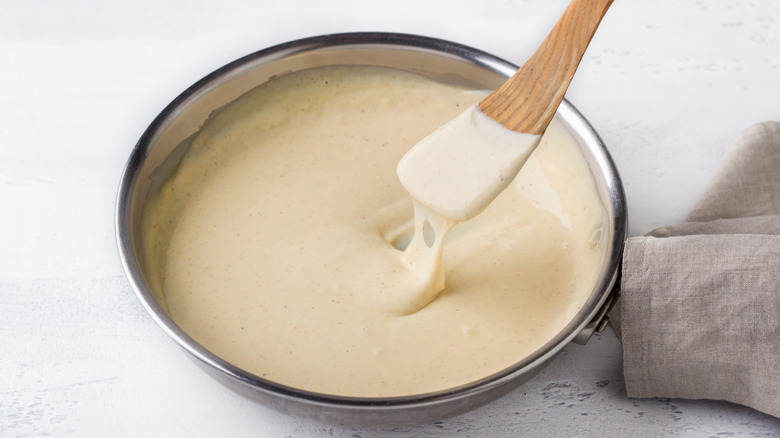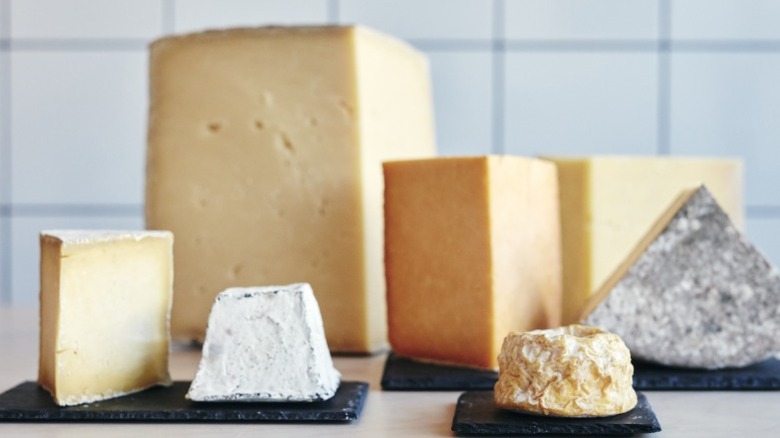The Unexpected Ingredients That Make Cheese Sauce Super Velvety
I used to be intimidated by homemade cheese sauce. Most recipes I've tried call for a roux — a thick mixture of flour, butter, and seasonings — and then slowly add milk and small handfuls of shredded cheese to create a luscious sauce perfect for drizzling over nachos, pretzels, or pasta. Unfortunately, this method has left me with lumpy, goopy cheese mixtures that don't resemble sauces.
There's a simpler way to achieve a silky-smooth cheese sauce with ingredients you have at home. The key is to create a melting salt — like sodium citrate — commonly found in cheese products like Velveeta. Melting salts break down the cheese's acidity and proteins so they combine more easily with other ingredients. At home, you can use items from your medicine cabinet, but a mixture of lemon juice and baking soda will also work. When lemon juice and baking soda combine, a chemical reaction occurs, leaving behind sodium citrate. Add some water and shredded cheese, and watch the mixture transform into the smoothest, creamiest cheese sauce of your dreams.
The best cheeses to use for smooth cheese sauce
A cheese's melting point is determined by several factors: its age, acidity, moisture content, and fat content. Cheeses with more moisture and fat melt more easily than cheeses with less moisture and fat. Aged cheeses take much longer to melt than younger cheeses. The cheese you choose to work with will determine how melty and velvety the final sauce will be.
For a rich and creamy cheese sauce that's bursting with flavor, use a block of cheddar. This type of sauce is perfect for mac and cheese or finger-licking-good nachos. If you're looking for a tangy, acidic, and smooth cheese sauce to drizzle over a marbled steak, melt down high-fat Gorgonzola or blue cheese crumbles with sodium citrate. Use Gruyère or fontina cheese to build a dreamy, delicious, and slightly nutty sauce for orecchiette or fusilli pasta with chicken.

